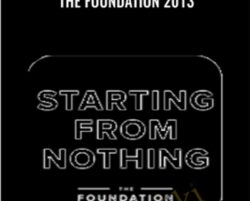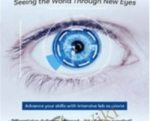dentifying Visual Challenges and How to Treat ThemHow can you properly assess and make functional changes in the vision of a client who has experienced a neurological event, such as CVA or TBI? In six hours, you will explore vision and vision-related deficits that occur after such a tragedy and how to improve function and independence in your clients with the implementation of three crucial steps. First, perfect your evaluation techniques with interactive labs so that you can implement them the next day. Second, you gain new intervention strategies that include compensation and remedial-based treatments that focus on function and return to daily life. Best of all, most of these exceptional strategies will have minimal to no financial impact in the clinic. Lastly, your advocacy and care of these clients will be immensely enhanced by learning the documenting tips and tricks to justify insurance coverage. Walk away with new and ready-made tools – and a new lens – to accurately see and treat your clients.Review the basic concepts of vision rehabilitation and how to support the therapeutic intervention in documentationDemonstrate manual evaluation skills for ocular motor alignment and depth perceptionDescribe interventions for ocular motor alignment and depth perceptionDemonstrate manual evaluation skills for visual field cut and hemi-spatial inattentionRecommend interventions for visual field cut and hemi-spatial inattentionApply manual evaluation skills for mid-line shift syndromeList interventions for mid-line shift syndromeVISION & VISION REHABTerminology and concepts in vision and vision rehabRed flagsSequence of actionWhat to do nextWhen to referAnatomy of the eye and brain in regard to perception and processingDIAGNOSIS: VISUAL ACUITY & VISUAL FIXATIONEvaluation and screening methodsTreatment and compensation strategiesDIAGNOSIS: OCULAR MOTOR ALIGNMENT & DEPTH PERCEPTIONDefine the issuesEvaluation and lab practiceTreatment and compensation strategiesLab practiceCase study: treatment planning for specific examplesDIAGNOSIS: VISUAL FIELD CUT & HEMI-SPATIAL NEGLECTDefine the issuesDifferences between cut and neglectWhy left neglect is more common than rightDepth of daily impact on life of a clientEvaluation and lab practiceConfrontation TestSimultaneous Stimulus TestPencil and paper screenersTreatment and compensation strategiesLab practiceCase study: treatment planning for specific examplesDIAGNOSIS: PUSHER SYNDROME/MIDLINE ORIENTATION SHIFTDefine the issuesEvaluation and lab practiceTreatment and compensation strategiesLab practice using NDT and NEURO-IFRAH (NDTC) principalsCase study: treatment planning for specific examplesWheelchair and bed positioning to rehabilitateDOCUMENTATION & ADVOCACY FOR COVERAGEIdentify objective data to document and show improvementDeveloping goals to justify insurance coverageTag: “Visual Rehab After Neurological Events: Seeing the World Through New Eyes – Michelle Mioduszewski” Review. “Visual Rehab After Neurological Events: Seeing the World Through New Eyes – Michelle Mioduszewski” download. “Visual Rehab After Neurological Events: Seeing the World Through New Eyes – Michelle Mioduszewski” discount.
 The Foundation 2013 – Dane Maxwell
₹28,884.00
The Foundation 2013 – Dane Maxwell
₹28,884.00
 Become a Microsoft Excel Wizard in 1 Hour – Cody Baldwin
₹3,486.00
Become a Microsoft Excel Wizard in 1 Hour – Cody Baldwin
₹3,486.00
Visual Rehab After Neurological Events: Seeing the World Through New Eyes – Michelle Mioduszewski
₹12,616.00




